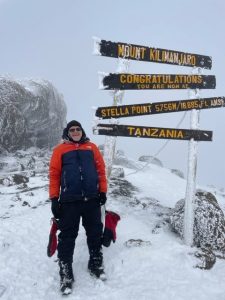Kilimanjaro Height: A Comprehensive Guide
Mount Kilimanjaro, located in Tanzania, is the highest mountain in Africa and one of the most popular peaks to climb in the world. Standing at a towering height of 19,341 feet (5,895 meters), Kilimanjaro offers a challenging yet rewarding experience for climbers of all levels. Understanding the height of Kilimanjaro is crucial for anyone considering taking on this adventure.
Factors Affecting the Difficulty of the Climb
Altitude
The altitude of Kilimanjaro is one of the main factors that make the climb challenging. As climbers ascend the mountain, the air becomes thinner, making it harder for the body to take in oxygen. This can lead to altitude sickness, which can range from mild symptoms like headaches and nausea to more severe conditions like pulmonary or cerebral edema. It is crucial for climbers to acclimatize properly by taking their time and allowing their bodies to adjust to the altitude.
Terrain
The terrain of Kilimanjaro varies from lush rainforests at the lower levels to barren alpine deserts at higher elevations. Climbers will encounter rocky paths, steep inclines, and even snow and ice near the summit. The difficulty of the terrain can vary depending on the route chosen, with some routes being more technical and challenging than others. It is important for climbers to be physically prepared for the terrain they will encounter on the mountain.
Weather
The weather on Kilimanjaro can be unpredictable and extreme. Climbers may experience hot temperatures in the lower elevations, freezing temperatures at night, and even snow and ice near the summit. Strong winds and sudden changes in weather conditions are also common on the mountain. It is essential for climbers to be prepared for all types of weather and to have the appropriate gear to stay safe and comfortable throughout the climb.
Duration
The duration of the climb can also affect its difficulty. Most climbers take between five to nine days to reach the summit, depending on the route chosen. Longer climbs allow for better acclimatization and a slower ascent, reducing the risk of altitude sickness. Climbers should choose a route that fits their fitness level and experience to ensure a safe and enjoyable climb.
In conclusion, understanding the height of Kilimanjaro and the factors that affect the difficulty of the climb is essential for anyone considering taking on this challenge. With proper preparation, training, and guidance from experienced guides, climbers can safely reach the summit and experience the breathtaking views from the top of Africa’s highest peak.
For those interested in climbing Mount Kilimanjaro, Sunset Africa Safari offers guided tours to the summit. For booking requests, clients can contact info@sunsetafricasafari.com for more information.


